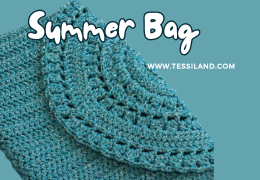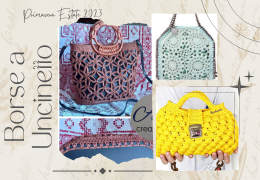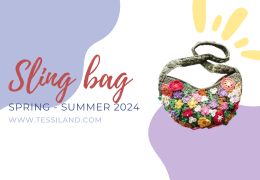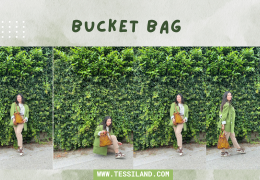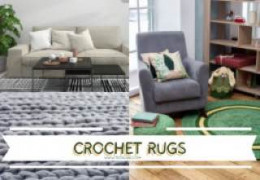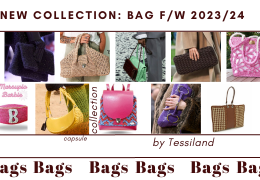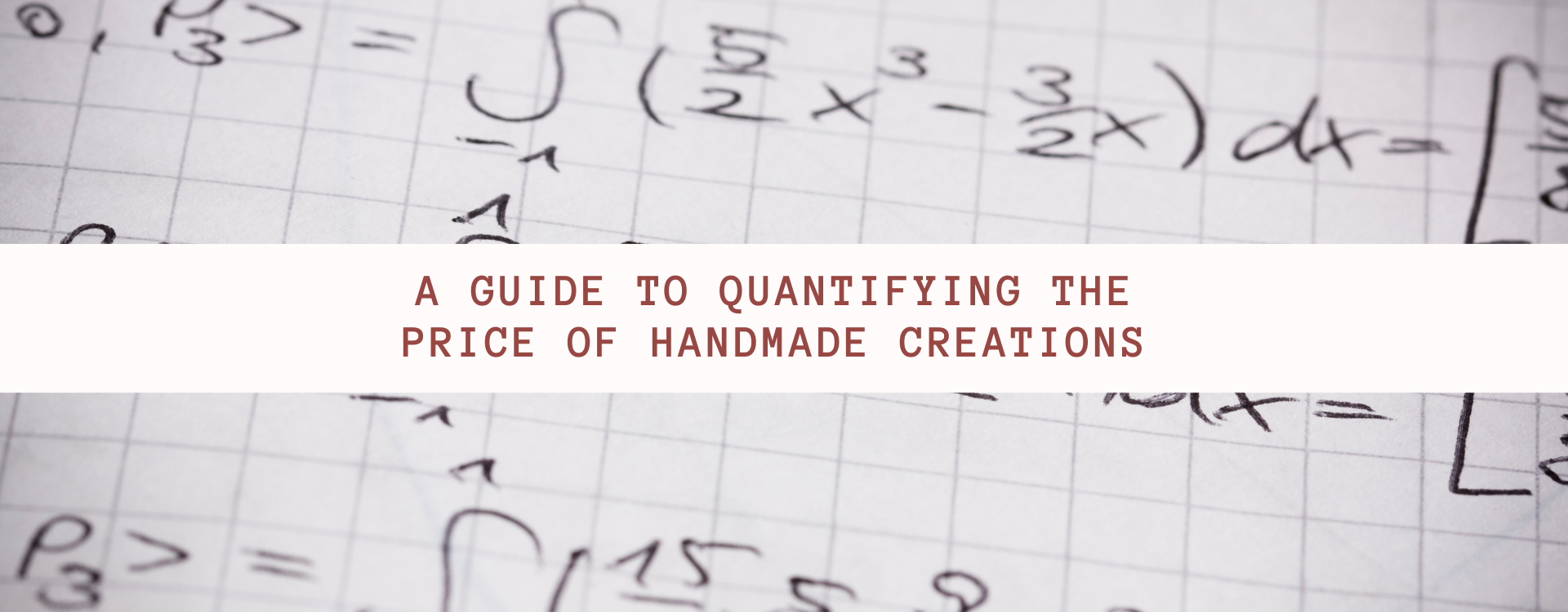Two bags, two styles, one single trend. The Japanese knot takes over summer 2025 with two irresistible crochet...
At what price can I sell my crochet creations
Now Pricing has become easy and fast
One of the most frequently asked questions we receive in Customer Support on the Tessiland portal is: "Can you give me an idea of the price at which I could sell my items?" Well, it's not a question that has such a straightforward answer because there are many factors to consider, and often they are subjective. So, is there at least a rough idea? Well, now there is! A Tool (literally a "tool" but we'd better say a calculation module) that takes into account all these variables and will give creatives the opportunity to know a hypothetical market value for their creation! To find out, continue reading this article, but before that, let's analyze the criteria that have made the development of this incredible tool possible and the coefficients used.
Understanding the Value of Handmade
First and foremost, it is essential to understand the value of handmade. Each unique creation carries with it hours of work, dedication, and passion. This intrinsic value should be recognized and respected in the selling price. So far, it's all very clear, but before generating a price, it is essential to analyze a few other very important steps, bearing in mind that the Tessiland MODULE does not only suggest the selling price but rather a median orientative price that will be the basis for a subjective evaluation. Another fundamental aspect to consider is that the MODULE does not evaluate any risk factors (so it is assumed that at least the materials are covered in costs by the client).
1. Calculating Material Costs
A fundamental consideration in determining the price of your creations is the cost of materials. Remember to include every single item used in the creation process, not only the main materials but also the secondary ones and incidental expenses.
Consider Indirect Costs
In addition to direct costs, do not forget about indirect costs, such as energy used, time spent on material research, shipping expenses, promotion, and managing your business.
2. Difficulty of Creation
When considering the difficulty of the creation, it is necessary to consider not only the inherent difficulty but also the effort put into researching not only materials and components but also style. Why is this parameter necessary in determining the price? The answer is simple: the level of difficulty also affects the uniqueness of a creation. The more a creation requires skills, the less it is easy to find and spread, and therefore the calculation coefficient for the price varies. We will then have:
- Easy: a creation within the reach of everyone, even those with very little experience in the creative field;
- Low: a creation that requires some dexterity but a minimum knowledge of techniques;
- Medium: a creation with a level of difficulty that is not suitable for beginners and involves the use of multiple techniques (e.g., sewing, applications, etc.)
- High: a creation with a higher level of technique knowledge, multiple steps, and advanced dexterity;
- Difficult: a creation with advanced difficulty level, made using non-standard techniques that are not accessible to everyone. These creations involve color changes, complex techniques, applications, and a construction method that is more challenging than average;
3. Size
Naturally, size influences not only the quantity of materials but also the time required to complete the creation and the importance of the creation itself. We will have:
- Miniature: creating small gadgets, keychains, potholders;
- Small: creating small objects such as amigurumi, doilies, neck warmers, socks, or caps;
- Medium: creating medium-sized projects such as scarves, shawls, vests, children's clothing, but also bags or moderate-sized baskets;
- Large: creating clothing items such as sweaters, cardigans, but also medium-large bags and accessories that require an approximate consumption of more than 500 grams of product.
- Over: creating very important projects such as blankets, maxi cardigans, coats, plaids, and bedspreads;
4. Experience
This coefficient is important for classifying the accuracy of the creation and therefore the quality of the work done. As it is easy to understand, this is also an aspect that influences the price. The parameters are:
- Inexperienced: the level of craftsmanship of someone who has recently started working in the handmade world and is presenting their first creations to the public;
- Beginner: the level of someone who knows a few techniques but has already completed some work with good manual skills;
- Hobbyist: the level of someone who frequently creates handmade items for themselves and others and already has a good knowledge of crafting techniques;
- Experienced: the level of someone who has extensive knowledge of crafting techniques and who not only skillfully executes their creations but also pays attention to detail;
- Professional: the level of someone who creates handmade items on a daily basis. The professional artist has a complete knowledge of crafting techniques and not only takes care of the details of the creation but also the packaging and communication. "Professional" is the attribute of someone who turns their craftsmanship into a real job.
5. Marginality
Marginality is one of the most complex aspects to calculate and should also take into consideration factors such as territoriality or other coefficients that have been calculated in the module (e.g., if you live in a tourist area with a large influx of tourists, this should be considered and would certainly make a difference compared to someone exhibiting at a fair or living in a sparsely populated mountain village where tourism is low and perhaps only participates in one or two seasonal markets). Here are the parameters:
- Amateur: this degree of marginality is chosen by those who occasionally create handmade items and consider selling them as sporadic income;
- Hobbyist: someone who, even if they have a higher production level compared to an amateur creative, does not make many sales or only does so sporadically;
- Engaged: someone who has a good level of skill and creates their creations with a certain regularity, participating frequently in events such as markets, fairs, and exhibitions;
- Professional: someone who makes handmade their main activity, has fulfilled or intends to fulfill tax obligations, and therefore collects orders, takes care of packaging, and manages shipments even outside their area of expertise;
Module to calculate the selling price of a creation
After analyzing the coefficients used to develop this innovative calculation tool, we are now ready to test our module, which is free for all customers registered on the Tessiland portal.
How can you make the most of the Tessiland module?
If you are registered on the Tessiland website, you will find this valuable tool in your personal account, which will allow you to be very professional in setting prices, namely:
- Accurate prices: The module can calculate the cost of materials, the time spent, and the value of experience, helping you determine an accurate price for your work.
- Equity: Thanks to this tool, you can ensure that the price of your work reflects its true value, avoiding underpricing or overpricing.
- Time saved: Since the price calculation is automated, artisans can save time and focus on creating their products.
- User-friendly: Even for those with no experience in calculations and cost evaluation, such a module can be of great help and easy to use.
- Transparency for customers: You can show your customers how the price is determined, explaining the value of the materials used, the time spent on creation, and the cost of experience.
- Financial planning: The module can help estimate future costs and make more accurate forecasts, useful for financial planning and business management.
- Optimization of the production process: By identifying the costs associated with each product, you can optimize the production process, for example, by choosing more cost-effective materials or improving time efficiency.
- Customization: The module can be customized according to your specific needs, including different types of materials, variable processing times, and levels of experience.
- Increase professionalism: Using a calculation module shows a high level of professionalism and seriousness, which can increase customer confidence in your work.
- Assessing experience: The module can help quantify the value of your experience and expertise, which is often overlooked when pricing a handmade product.
Other things to consider
The price obtained from the module is a very precise average value and the result of a complex study developed by Tessiland to provide creators with a reference parameter. However, there may be other factors that can create some variation, and while starting from this average value, the following factors can be considered:
Know Your Market
Market analysis is essential in determining the price. Study your competitors, understand market trends, find out how much your customers are willing to pay, and position your price accordingly. This concept is especially valid if you are targeting a specific event such as a handmade fair, where if you offer a very simple product that can be easily replicated, you are likely to face more competition. On the other hand, you may benefit unexpectedly if you offer a rare trendy creation.
Perceived and Emotional Value
In addition to tangible factors, it is important to consider the perceived value and emotional value of your creations. This includes the customer experience, the story behind your creation, the uniqueness of the artwork, and the emotional impact it can have on the buyer. Also, related to the target market, the perception or current trendiness of a particular creation can influence its price.
Value in Space and Time
As a practical example of this point: how much more interesting could a pair of crocheted sandals be at a seaside market in a tourist destination in August compared to a knitted scarf offered at the same occasion? This illustrates that the intrinsic value of a creation can also be influenced by the location and period in which it is presented.
Now you have all the tools to determine your price, do it accurately and quickly, and have a guideline that will make you a true sales professional!
Remember that the module cannot evaluate risk factors, so always consider requesting an advance payment for materials when taking commissions from unfamiliar people!
If you are curious to learn more about how to start making money with crochet and knitting, read this interesting article!
Let's Look at Some Practical Examples
Wedding Favors
Let's say a client asked you for a quote for heart-shaped wedding favors made with Iggy cotton. Suppose to create these favors, you need a keychain and an organza bag. Let's assume the client requested 100 of them, with each favor weighing about 15 grams, resulting in a total consumption of 1.5 kg. Let's assume you are a hobbyist:
Materials:
The total cost of materials to make 100 wedding favors would be €149.50. Now, in our module, we select the difficulty level as "easy" since it is a creation that is simple to make and accessible to everyone. In the section for size, we choose "miniature", and in the sections for experience and margin, we select the Hobbyist option. In this case, the average market value for this work would be €242.89. Now, you can consider any subjective factors like emotional value and round it up or down... but you have a certain average value!
Apparel
Let's assume this time a friend of yours asked you to make the Sinatra cardigan by FataTuttofare! How much should you charge them?
Materials: 450g of
In this case, you will need 2 balls of Sinatra with a value of €19.80. We will input the "medium" difficulty level, "large" size, "expert" experience, and "Committed" margin. The average value for the creation will be €55.04. Now, you can consider any subjective factors like emotional value and round it up or down... but we have a certain average value!
Conclusions
This module, exclusively designed by and for Tessiland®, will provide you with a GUIDELINE for pricing. Our coefficients have been carefully studied based on the composition of the European creative landscape and precise demographic and economic statistics. As reiterated several times in the article (but it can't be stressed enough), specific territorial, economic, and creative contexts should be taken into account.
Every person engaged in creativity will need to choose the category they belong to, whether it's amateur creatives, hobbyists, or committed individuals, or even become a true professional.
That will be the only real difficulty; the rest will be done by the module FOR YOU!
As mentioned, having an average price does not mean having a set price to propose, but having a reasonable value to make some rough assessments. It is important to reiterate that these calculations cannot take into account risk factors, which should be duly considered.




